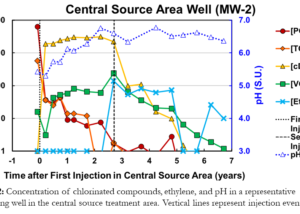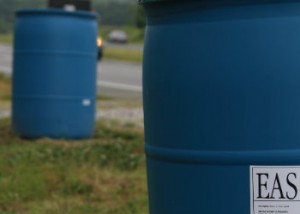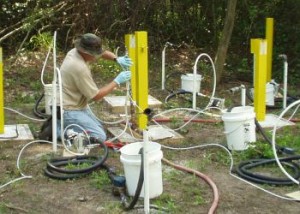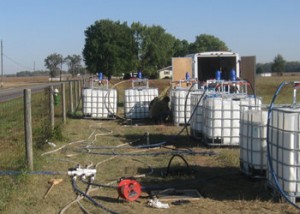References
References Jun Yan, Jeongdae Im, Yi Yang and Frank E. Löffler. Guided cobalamin biosynthesis supports Dehalococcoides mccartyi reductive dechlorination activity. Philosophical Transactions of the Royal Society B: Biological Sciences 2013, 368 (1616), 20120320. https://doi.org/10.1098/rstb.2012.0320 Devrim Kaya, Birthe V. Kjellerup, Karuna Chourey, Robert L. Hettick, Dora M. Taggart, and Frank E. Löffler. Impact of Fixed [...]
1-19-2022 EnviroClass: Petroleum Hydrocarbon Remedial Technology Evaluation
Anaerobic or Aerobic Bioremediation of Petroleum Hydrocarbons: Choosing and Using the Right Electron Acceptor for Your Site presented by our own Lydia Ross, PE Numerous retail fuel stations and fuel terminals across the United States have existing petroleum hydrocarbon plumes from former leaks. Although hydrocarbons are amenable to active [...]
January 19, 2022 EnviroClass: Petroleum Hydrocarbon Remedial Technology Evaluation
Petroleum Hydrocarbon Remedial Technology Evaluation Join our very own Lydia Ross, P.E., and Georgia EPD Brownfield Coordinator, Shannon Riley, for EnviroClass on January 19, 2022 at 12:00 pm EST for an evaluation of petroleum hydrocarbon remediation. January 19, 2022 at 12:00 - 2:00 pm EST Register! [...]
Giving Bioremediation a Chance at a Challenging Site
Results from this site and many others show that IBSR remains a strong option to treat sites in an efficient and affordable way, even when the conditions do not seem favorable for biological growth. EOS® Pro, CoBupH™, and BAC-9 bioaugmentation cultures can provide long-lasting substrate, adequate nutrients, and a pH-optimizing buffer to ensure successful site treatment.
Improving Bioremediation Performance
Improving Bioremediation Performance Robert Borden, PE, PhD provides an in depth explanation on how to improve your site's performance when using enhanced bioremediation. Dr. Borden will address substrate selection including critical parameters such as oil retention, injection well design, and lessons learned from past sites. Then he will walk you through how to [...]
Innovative Remediation Options & Molecular Biological Tools for Performance Monitoring
Innovative Remediation Options & Molecular Biological tools for Performance Monitoring The environmental remediation industry continues to tackle tough situations with innovative treatment and advances in molecular biological tools (MBTs) to provide more conclusive and comprehensive performance monitoring. In this presentation, Brad Elkins, EOS Remediation LLC, presents an introduction to in situ bioremediation and [...]
Sulfate-Enhanced Bioremediation of BTEX
Sulfate-Enhanced Bioremediation This case study describes using sulfate-enhanced bioremediation to stimulate anaerobic degradation of hydrocarbons in groundwater under sulfate-limiting conditions PROBLEM A former gas station in North Carolina contaminated groundwater with BTEX from a UST basin. The site is now in the median of a busy four-lane highway. Residents within 250 [...]
Using CoBupH™ to Adjust Aquifer pH
Using CoBuphMg™ to Adjust Aquifer pH This case study demonstrates how adding CoBupHMg™, a colloidal buffer, can control and adjust aquifer pH for enhanced bioremediation. PROBLEM A US Government site had elevated TCE. Low aquifer pH stalled in situ bioremediation. PROJECT GOAL Inject organic substrate in the aquifer to enable [...]
Permeable Reactive Barriers Treat TCE
Permeable Reactive Barrier to Treat Trichloroethene Plume This case study demonstrates the effective use of permeable reactive barrier (PRB) technology with EOS® emulsified oil substrate injections to cut off TCE migration for enhanced bioremediation. PROBLEM A large manufacturer in Indiana needed to remediate a long plume of TCE-contaminated groundwater, threatening a river almost 2 [...]




